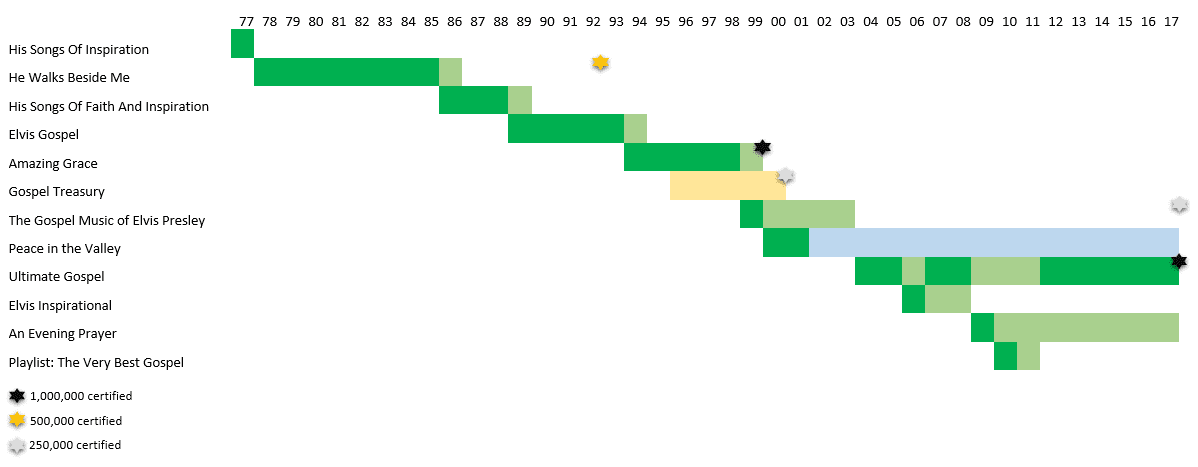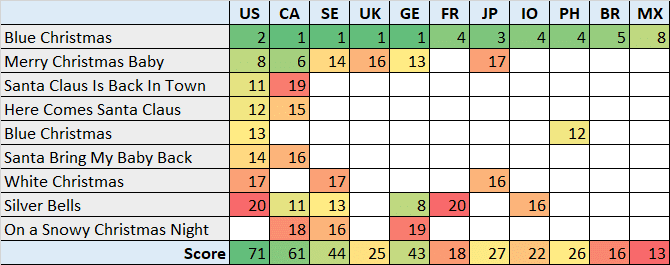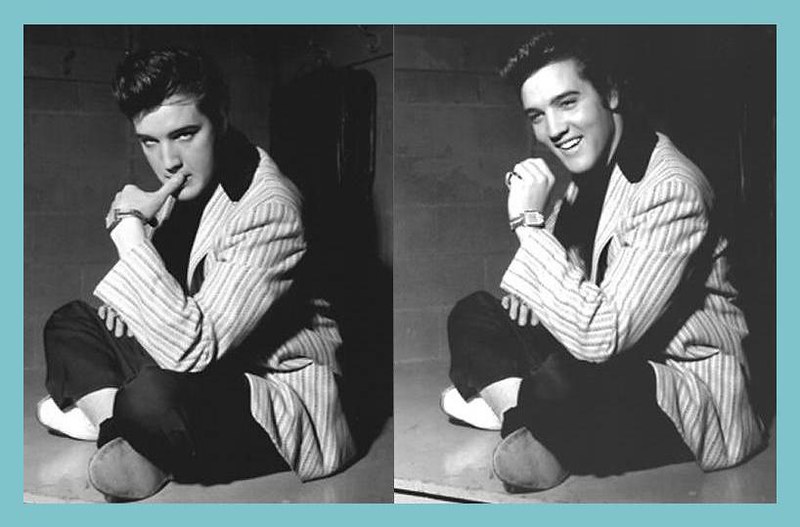Elvis Presley’s discography puzzle
As soon as sales of Elvis Presley are mentioned, we hear about the insane number of albums he issued. Considering that a single album can sell 10 million units or more, an artist who released thousands of records must have sold billions. This approach is a bit simplistic, too simplistic. Actually, the whole thing around the number of albums he released is a huge lie.
Technically speaking, there is indeed several thousands of records credited to Presley. His page on Discogs lists a stunning 3,333 records in total, made of 311 albums, 1,036 singles, 1,810 compilations, 83 videos and 93 records tagged as miscellaneous. The real number is even higher since the website requires contribution from users so there is still missing entries. Functionally speaking though, the real number is much lower. To understand why, we must understand how his discography is structured.
The real number of releases
After all, what’s a release? In recent decades, it has been the norm for international artists to issue their records in most markets. In the past, global releases weren’t automatic, far from that. The standard was to release records only in English-speaking countries and in Northern Europe.
If this has changed for long – although streaming is making it true anew – stigmas of this reality remain. In the US, Presley was massive from day 1 so his early hits are incredibly popular there. Elsewhere though, singles that emerged in later years like In The Ghetto, Always on My Mind, Suspicious Minds, Burning Love and My Way are much bigger. Also, the distinct release history in each market led all of them to have distinct needs in terms of new packaging too.
Discogs has the good idea to distinguish distinct releases of the same album or compilation. We can see where and when a compilation was issued. If we check these 500 best of type records of Presley, we notice that:
- 444 of them have only 1 version
- 40 have 2 versions
- 8 have 3 versions
- 3 have 4 versions
- 3 have 5 versions
- 1 has 6 versions
- 1 has 22 versions
That’s a total of 603 versions for these 500 compilations. It’s less than the 696 versions of the Beatles‘ Sgt Pepper’s Lonely Hearts Club Band and the 758 versions of the Dark Side of the Moon by Pink Floyd. All those with only one version were issued in one market area only. Various versions do not even imply an international release. Most records with 2/3 versions are records issued in one country only with a variation, like this Green / Red issue of Merry Christmas Baby in the UK.
Basically, these figures mean that the huge majority of Presley‘s records are made of local releases. Rather than receiving a release in 50 countries for a compilation, 50 compilations will pop up, one for each market. It’s schematic, but you got the idea.
It is very tempting to add 1-300,000-ish units for every record about which there is no sales information. It’s how we create a claim of 1 billion records sold or more. While a proper US release that remained in the market for years can in fact be at 300,000 units sold, assuming this value for minor labels compilations locally released in much weaker markets and that never charted will conclude on disastrous results.
Out of the previous list of 500 compilations, the only one with more than 6 versions is The Essential from 2007. Indeed, it is the only global release from the entire page. Unsurprisingly, we have plenty of information about its sales from various markets.
OK, so the insane number of releases is artificially inflated by the fact that a lot of local compilations are released here and there instead of global releases. Presley released tons of albums in the US, still. True, but here too we can adopt a much more relevant approach than simply counting them.
Replacement products
From 1956 to 1977, Presley released 42 albums of mostly original material, both studio albums or soundtracks. Quickly, compilations came out. His first major best of, Elvis’ Golden Records, arrived in 1958, a mere two years after his debut. Since then, it has been a never ending flow of compilations.
If you are familiar with the Commensurate Sales to Popularity Concept, you know that compilations do not create value, instead they exploit an already existing popularity. Once you release a new hits package made of the same songs, you kill the previous one.
Focus on Gospel albums
Let’s check the example of Gospel / Inspirational albums of Presley. He issued 3 of them, His Hand in Mine in 1960, How Great Thou Art in 1967 and He Touched Me in 1972. They all failed to go Top 10, in part because of the poor representation of Christian outlets sales on Billboard. They went on to become consistent catalog sellers during the 60s and the 70s since their songs weren’t covered by hits packages. Ultimately, they were awarded respectively 1xPlatinum, 3xPlatinum and 1xPlatinum during RCA major audits of the 90s.
Since these songs weren’t fitting on hits packages, gospel-themed compilations appeared. The first one was His Songs of Inspiration issued at his passing in 1977. Since then, more than 50 gospel-themed compilations have been released in at least one market. Below is the timeline of these RCA/BMG compilations in the US:

A dozen of packages made of mostly the same songs. The theme was the same, although we can highlight that two albums of this nature were able to live simultaneously: 1CD budget releases and more pricy 2/3CDs packages like Peace in the Valley. Gospel Treasury was issued by the Special Products line of BMG, while Ultimate Gospel from 2004 was reactivated later on since it is regarded as the best content / price value of the list. In recent years, iTunes made it possible for some of them to live together. There is also half a dozen more similar packages issued by minor labels to very low sales.
1+1 isn’t always 2
What’s important to notice in this picture is that the longest a package has been the most recent one, the most it sold. It’s because these records sell only while they are recent, most never move to catalog status. Basically, they replaced each other through the years, exploiting the same appeal, so when a new package comes out, the former one is deleted. Technically, this inflates the number of albums released. However, functionally speaking it’s just a new title and cover which replace former ones.
It is relevant to focus on post-1994 releases since until that date the studio albums were still selling well thanks to their release in CD. That gospel catalog sold over 3,5 million units since 1994, a pace of 150,000 units per calendar year. It’s an organic flow of sales so it doesn’t matter if it is eaten by 1 or 50 packages. Thus, instead of looking at 12 or 20 gospel packages, these releases should be viewed as a stand-alone compilation that routinely sells 150,000 copies per year in the US.
It’s a huge information to own since it enables us to set realistic estimates for packages that were the main gospel titles at some point but have been replaced before reaching certification levels like His Songs of Faith and Inspiration from 1986 and Elvis Gospel from 1989. It also clarifies that even if an album like Amazing Grace shifted a million copies in 5 years, we aren’t looking at relevant since then quite simply because it was replaced by new packages at that point.
RIAA’s view of a catalog
When we look at Presley‘s discography, it is important to distinguish legitimate releases and duplicated ones. How is a promo single treated? A reissue of an album? A box set of existing material? False answers are assumed more often than not so let’s clarify these points.
Promo records are easy to treat. They aren’t made for sale, so even if they can now be purchased as collectors on second-hand, they aren’t accounted for on official tallies. They make up for nearly 10% of Presley‘s singles listed on discogs.
Reissues
Many claimed that remastered packages of the American legend are excluded from his certifications because they break RIAA rules. The argument is that at least 75% of the content must come from the original release, so if a studio album has 12 tracks, it can only be extended to 16 tracks. If the reissue has 17 songs or more, it is considered as a new album by the RIAA. This is strictly false. The 75% rule was printed as below on RIAA website:
*Enhanced CDs must contain at least 75% of audio content of regular CD.
Thus, the point is not to add at most 4 songs to a 12 songs album, but instead to keep at least 9 of its tracks into the new edition. That’s why massive reissues like Lady Gaga‘s The Fame (extended from 14 to 22 songs), Katy Perry‘s Teenage Dream (from 12 to 19) and Michael Jackson‘s Thriller 25 (from 9 to 16) saw their sales certified along with the original album. Since all reissues of Presley contain the original songs along with new ones, they are all accounted for by the RIAA. All but one: his 1957 Christmas Album was reissued under a budget line in 1970. Out of the 12 original tracks, only 8 remained inside the 1970, which explains why they are 3xPlatinum and 10xPlatinum, respectively, instead of 13xPlatinum combined.
Box sets
On top of reissues, we need to raise the point of box sets. The RIAA states the following about them:
*Each unit within set counts as one unit toward certification.
We tend to interpret from this rule that a double album which sold 1 million units can be certified 2xPlatinum. It’s absolutely true, but there is more about it. The RIAA states each unit is counted, but it puts no restriction about the receiver. In other words, a CD inside a box can be certified as part of that box… or by itself.
This rule is pretty infamous among Presley‘s fans since Garth Brooks has been challenging his RIAA platinum tally precisely by using it to death. Ironically, they also increase Presley‘s awards. Sales of packages like His Life and Music, Top Album Collection Volume 1, Top Album Collection Vol 2, Original Album Classics, The Collection and many others are eligible for all albums included into them. All of them include the bar codes of the original albums.
While these kind of releases are often disregarded, it is ludicrous to expect RCA / BMG to ignore shipments of these CDs into original releases, especially since box sets haven’t sold enough to be certified on their own. In fact, these packages are keeping alive many original albums, enabling them to be hit new certifications even if they are selling close to nothing on their own for very long. It means that when one adds sales of His Life and Music to Presley‘s catalog, he is double counting them since they are already included into the sales of the individual records on it.
Nevertheless, t’s still important to estimate these releases since individual albums haven’t always reach new awards afterwards. For example, among the 4 Golden Records volumes inside His Life and Music, only the first one was updated by the RIAA after the release of this package in 1994. Still, it is fundamental to avoid double-counting for all albums which saw their certification upgraded precisely thanks to these boxes.
Please say hi to the 6 Elvis Presleys
The obsession with the number of LPs and CDs released by Presley ends up making us miss the real point. There isn’t one Elvis Presley but six. That’s the most important highlight we can extract from his catalog.
A casual buyer interested in Michael Jackson will be more than satisfied with the purchase of The Essential. This package contains 40 tracks worth a massive 79% of streams from the back catalog of Jackson, the Jackson 5 and the Jacksons combined. Similarly, the purchase of Greatest Hits 1970-2002 provides you 75% of the worth of Elton John‘s catalog. Devil’s Got a New Disguise contains 80% of the attractiveness from Aerosmith‘s discography.
There is hundreds of examples, to make it short all artists which debuted in late 60s or later will have one career-spanning compilation which cannibalize their entire back catalog. We saw that the Beatles have two distinct discographies running in parallel. The hits, issued as stand-alone singles during the 60s and exploited through various compilations, and their studio albums. That double catalog enables for original albums to stay alive in spite of new best of releases, partially explaining why they are so far away from remaining acts in terms of cumulative sales.
With Elvis Presley, we aren’t looking at 2 but at 6 catalogs. I already mentioned his gospel works. They were 3 albums that got repackaged many times ever since 1977. Then, of course, there is his Christmas records. Just like the Beatles, his big hits were stand-alone singles as it was the norm during the 50s. Out of the 31 songs on his large selling compilation 30 #1 Hits, as many as 23 weren’t issued along with a studio album or a movie soundtrack. Speaking about them, they represent two more segments of his catalogs: studio LPs and Films songs. They, too, have been the subject of various themed compilations. A last set of recordings of specific nature for Presley giving his tremendous reputation is his live outputs. His biggest one is arguably Aloha from Hawaii Via Satellite. Its CD contains 29 songs, among which only 5 are in common with 30 #1 Hits. Among them, the version of Hound Dog is shortened to a mere 55 seconds.
In concrete words, these catalogs are exploited on their own, with very few dependencies between them. The purchase of a Christmas or a Gospel album of Presley won’t negatively impact his catalog sales for the remaining titles and so on.
On top of these 6 living catalogs, there is also collectors. An awful lot of them came out during the last 40 years. This one is limited to 500 copies, but you can find hundreds of similar packages with ease. While they may share similar tracklists than popular compilations, they are explicitly targeting fans who collect his records rather than the general public, so they don’t cannibalize sales of remaining CDs either.
Some Presleys are bigger than others
From a catalog completely impossible to analyze, made of thousands of records, we are down to 6 living discographies. That’s a much clearer view for sure. We also know the Heatmap of Presley over the globe. However, I’m now telling you that there isn’t one but several artists behind his name. How does it impact our perception of his success?
His studio albums for example sold a lot in the US, but very few elsewhere because the recording industry was nowhere near global at the time. The movie industry was already more developed, so his soundtracks used to sell a bit better abroad. It’s still mostly after 1977 that his sales took off globally, mostly on the back of compilations. We can easily understand that depending on the market, the popularity of each of his catalogs will differ.
Let’s use the example of his Christmas recordings. They are obviously massive sellers in the US. Their cumulative RIAA tally is up to an absurd 24,5 million units sold. We are left wondering if they are as strong elsewhere, especially knowing that various markets aren’t very keen with Christmas releases.

This table paints an overview of the performance of Presley‘s Christmas songs on YouTube from December 10th, 2017 to December 25th, 2017. It’s where they ranked among his personal Top 20 in the US, Canada, Sweden, the UK, Germany, France, Japan, Indonesia, the Philippines, Brazil and Mexico. The score is a simple reverse scoring system, assigning 20 points for a 1st place, 19 points for #2, …, 1 point for #20.
This very quick exercise lets no doubt at all: his Christmas recordings are way more popular in the US and Canada than abroad. The most Christmassy European countries like Sweden do activate the Xmas mode, but at a lower scale than in the US. In countries like the UK and Germany, Christmas material do well too but they are more focused over a limited amount of songs, thus the effect is visible on streams but not so much in album sales. Then most remaining places have little interest in the Xmas Presley. The most striking example is Mexico where even at Christmas, only one holiday song appears among his Top 20, accounting for a mere 1 every 30 views.
We noticed on our heatmap that the rock icon performed fairly well in Brazil, his 10th best performing market relatively speaking in comparison to the remaining monster sellers. Thus, his weak results with his Christmas records also mean that his hits are even stronger than first anticipated. In short, each catalog of Presley has a specific popularity level in each market. The good news is that we have tools to perfectly value that.
Conclusion
I hope this article has helped you solve the puzzle of Presley‘s discography. Rather than thinking about thousands of mysterious records, you should now be able to draw a clear picture of his catalog and its 6 segments. If the thousands of releases are irrelevant, it’s maybe even more deserving to generate interest with so many different materials. On top of that, we also understood that while Elvis is a household name almost everywhere, it’s not the same albums that will perform the best depending on the market. From now on, we can starting putting figures in front of his albums!



